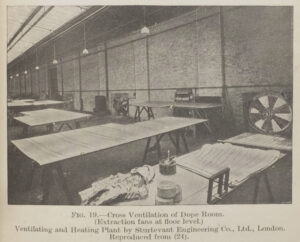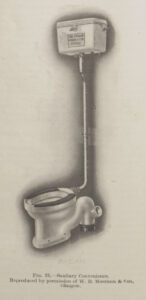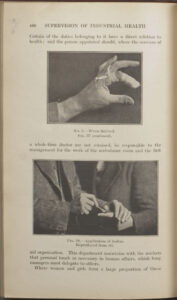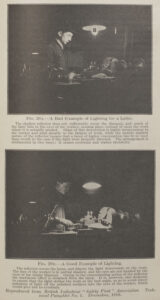During the Industrial Revolution, the physical well-being of workers was of little concern to the typical employer. Small children were regularly shoved up chimneys, and were also expected to pick out broken threads from massive machines that were still running. In the 1910s and 20s, female workers at the United States Radium Corporation ingested radioactive materials as they licked the tips of their radium-laden brushes in an effort to paint glow-in-the-dark numbers precisely as their employers demanded. Eventually, though, the health of workers would come to be seen as a worthy consideration for industry.
Edgar Collis and Major Greenwood, this book’s authors, treated workers’ health as a serious matter. Both men had medical degrees and had served in various capacities as factory inspectors or members of research groups and boards. In this volume, they take a strictly medical view of industrial hygiene and ergonomics.
 The topics covered include fatigue, cancer, industrial accidents, lighting, and washroom accommodations. The book also has a chapter on “the use of alcoholic beverages by the industrial worker.” Though prohibition had gone into effect the year before this book was published, alcohol was still legal in England. Collis and Greenwood argue that “industrially, alcohol never improves and usually impairs efficiency.” This is obvious to us today, but from the authors’ accounts it seems that drinking on the job was fairly common when the book was written.
The topics covered include fatigue, cancer, industrial accidents, lighting, and washroom accommodations. The book also has a chapter on “the use of alcoholic beverages by the industrial worker.” Though prohibition had gone into effect the year before this book was published, alcohol was still legal in England. Collis and Greenwood argue that “industrially, alcohol never improves and usually impairs efficiency.” This is obvious to us today, but from the authors’ accounts it seems that drinking on the job was fairly common when the book was written.

Collis and Greenwood address the employment of women in industry in terms that betray the tenor of the times. They claim that “where women have been employed on the same work as men … their output on the average does not exceed three-fifths that of men.” That assertion is meant to be balanced, apparently, by this bit of good news: “in one respect woman possesses an anatomical advantage over man, owing to the occlusion of the inguinal canal which renders her practically free from … the danger of inguinal hernia.”
Also of note is a lengthy chapter, written by Arthur J. Collis, on “reclamation of the disabled,” wherein he discusses the importance of employing people with physical disabilities, particularly those who had become disabled during World War I. Collis covers the use of artificial limbs, and “fitting the work to the worker.”
 Today of course there are numerous laws and regulations in developed nations that serve to protect the health of the working population. And MIT, for example, maintains an Environment, Health, and Safety Office to help ensure the general safety of the Institute community, as well as compliance with all applicable laws.
Today of course there are numerous laws and regulations in developed nations that serve to protect the health of the working population. And MIT, for example, maintains an Environment, Health, and Safety Office to help ensure the general safety of the Institute community, as well as compliance with all applicable laws.
It was books like this one, written by credentialed and credible individuals, that helped change the mindset of industrialists and lawmakers in the early decades of the 20th century, and establish workers’ health and well-being as an important concern.

